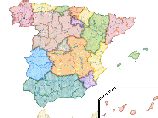Financing of the Autonomous Communities and budgetary information
The process of building the Autonomous State has led to a very significant political and financial decentralization, both because of the speed with which it has been carried out and because of its scope. Based on the basic principles that should inspire regional financing and that are enshrined in the Constitution, the financing model of the Autonomous Communities of the common system has been shaped in different phases, progressively betting on the so-called “fiscal co-responsibility”, instead of financing the Communities from a simple participation in state revenues.
This section focuses on the study of the financing model of the Autonomous Communities of common system, recently reformed in 2009. To this end, the information coming from the definitive liquidation of the model has been used during the years for which such liquidation already exists. Thus, after discussing the characteristics of the regional financing model, this section focuses on presenting a series of tables that summarize the weight and evolution of each of the resources, tax and non-tax, that make up the model. Finally, a study focused on the joint financing of the Autonomous Communities of the common system is incorporated, taking into account not only the financing coming from the model (most of it), but also other sources of resources such as the so-called conditional financing.
Together with the analysis of the functioning and liquidation of the financing model of the Autonomous Communities of common system, this section presents a series of budgetary data of the Autonomous Communities, providing valuable information in that it makes it possible to appreciate the significant evolution of the volume of resources available to the Autonomous Communities, as reflected in their respective budgets since 2000.
